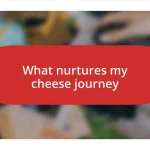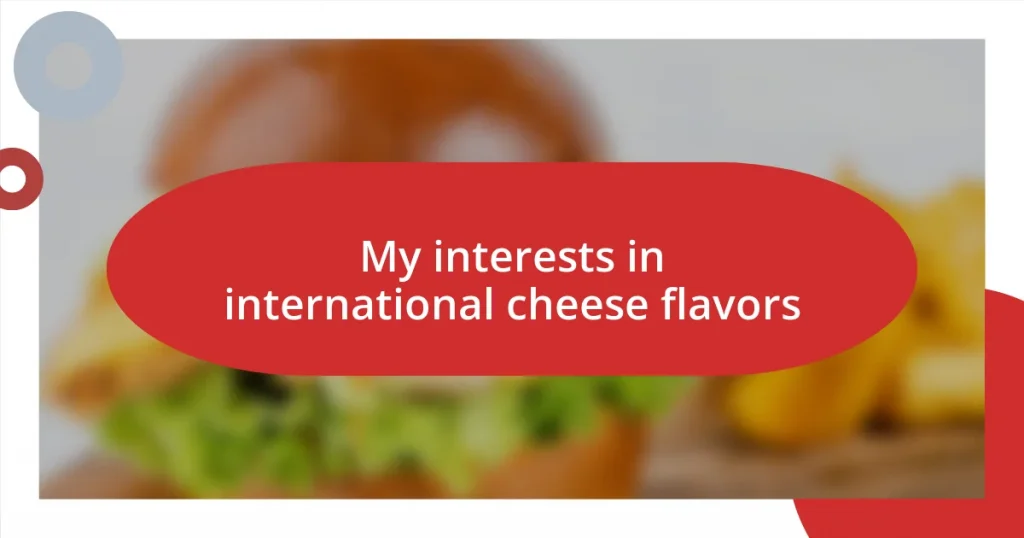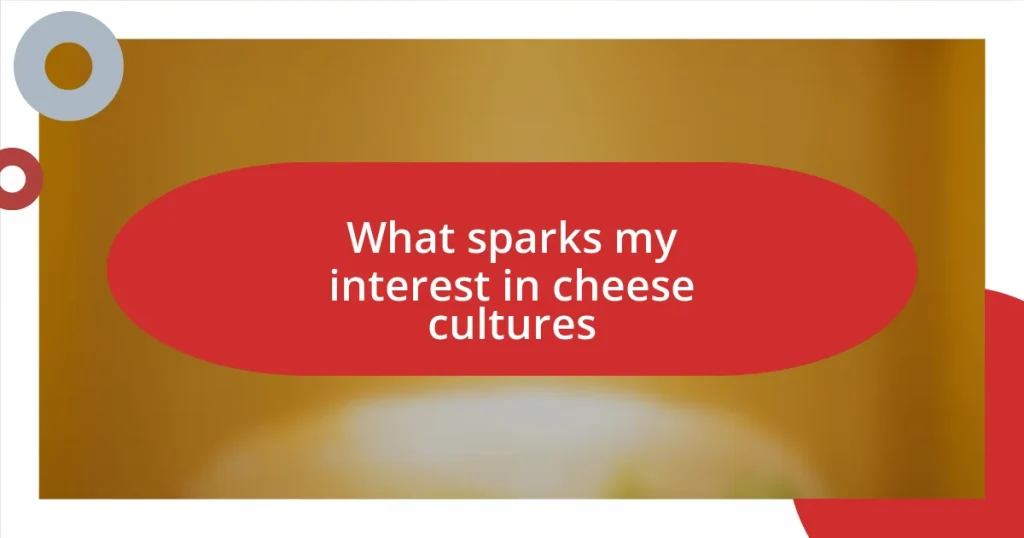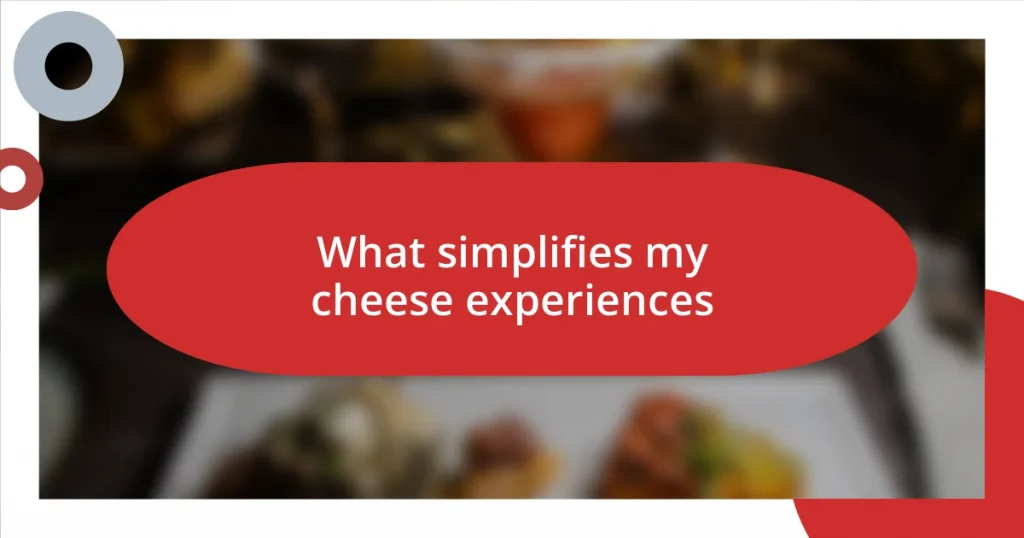Key takeaways:
- The flavor of cheese is deeply influenced by its terroir, cultural context, and traditional methods of production, connecting it to memories and experiences.
- Cheese tasting involves techniques like visual inspection, aroma assessment, and flavor pairing, enhancing the sensory experience and appreciation of each variety.
- Traveling for cheese offers opportunities to engage directly with artisanal producers, enriching the understanding of diverse cheeses through personal stories and meaningful connections.
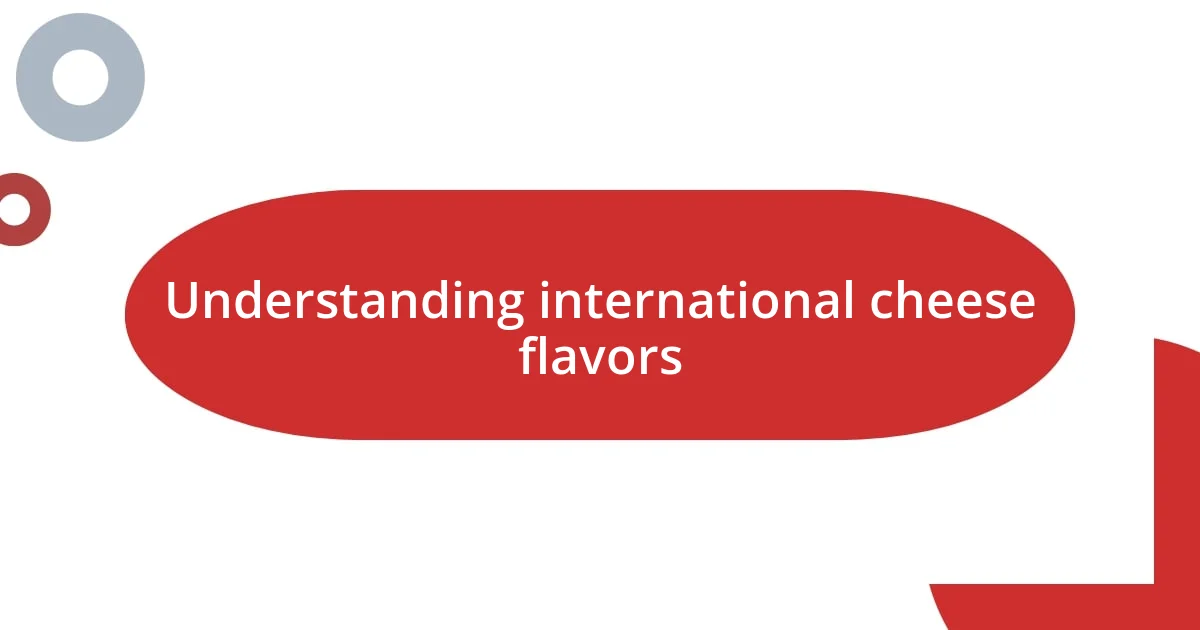
Understanding international cheese flavors
When it comes to cheese, every bite can transport you to another corner of the world. I remember a trip to France where I tasted a creamy Camembert, rich with earthy notes that perfectly reflected the lush pastures of Normandy. It made me ponder—how does the terroir, or the environment where the cheese is made, shape its flavor profile?
Exploring the sharpness of an aged cheddar from England, I felt the delightful contrast between its crumbly texture and robust taste. Each nibble brought memories of cozy pubs and warm beer—can you see how certain cheeses are tied not just to taste, but to culture and experience? This connection fuels my passion for understanding not only the flavors but the stories behind them.
Have you ever tried a tangy feta from Greece, crumbled over fresh tomatoes? That burst of saltiness is a reminder of sun-drenched Mediterranean summers. The diversity of international cheese flavors, influenced by local milk types, climates, and traditional methods, continually fascinates me and keeps my taste buds eager for more discoveries.
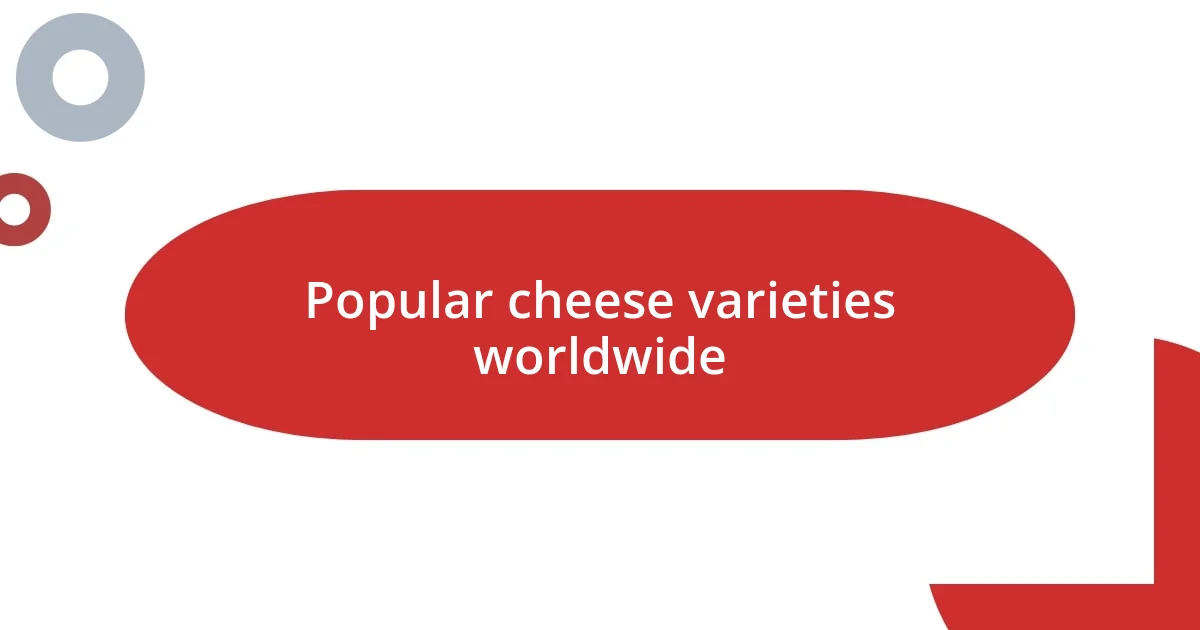
Popular cheese varieties worldwide
My travels have exposed me to a delightful array of cheeses that vary not only by region but also by tradition. For instance, the nutty, creamy Gruyère from Switzerland brings back memories of sipping hot chocolate in a quaint mountain village, with the cheese melted into a warm raclette. The experience was nothing short of magical, as each melt-in-your-mouth bite carried the essence of its alpine surroundings.
Here are some popular cheese varieties that have left a mark on my palate:
- Brie: A soft cheese from France, buttery and smooth, often paired with crusty baguette.
- Gorgonzola: An Italian blue cheese with a rich, bold flavor that can be remarkably sweet or tangy.
- Manchego: A firm Spanish cheese, known for its distinctive nutty flavor and made from sheep’s milk.
- Mozzarella: A fresh cheese from Italy, celebrated for its soft texture, often used in salads or melted on pizza.
- Parmesan: This hard cheese from Italy is aged to perfection, offering a sharp and savory kick, great for grating over pasta.
Each cheese, with its unique characteristics, adds layers of richness to not only meals but to the stories and memories they invoke for those who savor them.

Exploring cheese tasting techniques
Exploring the nuances of cheese tasting is an exciting journey, one that I cherish every single time I indulge in it. I learned early on that the way you approach each cheese can significantly enhance the experience. For instance, I often take a moment to observe the cheese—the color, texture, and aroma all hold secrets waiting to be uncovered. Smelling the cheese closely can reveal its origins and complexities, much like sniffing a good wine. It’s a sensory experience that adds depth to each bite.
When tasting, I find it essential to savor the cheese without distractions. I recall sitting in a cozy cheese shop, surrounded by an array of samples, and deliberately blocking out the noise of the bustling street outside. Just me and the cheese. As I allowed a wedge of pungent Roquefort to melt slowly on my tongue, I experienced a burst of creamy, tangy delight that lingered, reminding me to always take my time during tastings. Each cheese has its own story, and truly listening to those flavors is what makes cheese tasting so magical.
Moreover, I often use a simple technique called “pairing.” Different cheeses harmonize beautifully with various accompaniments like fruits, nuts, or honey. For example, pairing a sharp aged Gouda with a touch of honey creates a delightful contrast that elevates each component. It’s like composing a piece of music, where each note has its place. This technique not only enhances the cheese’s character but creates an experience that is both flavorful and memorable. Exploring these pairing possibilities expands my palate and continues to inspire my love for international cheese flavors.
| Tasting Technique | Description |
|---|---|
| Visual Inspection | Observe color, texture, and presentation. |
| Aroma Assessment | Smell the cheese to uncover underlying notes. |
| Flavor Pairing | Combine with fruits, nuts, or honey to enhance tasting experience. |
| Slow Tasting | Take your time to savor and identify flavor notes. |
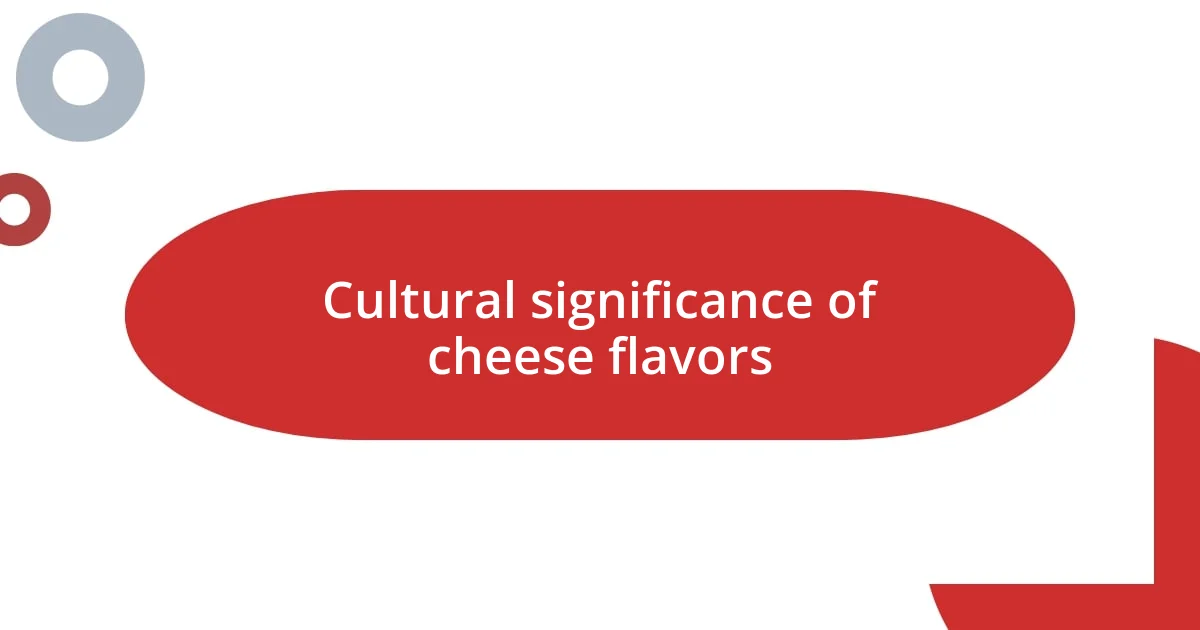
Cultural significance of cheese flavors
The cultural significance of cheese flavors cannot be overstated; each variety tells a story rooted in its geographical and historical context. I remember sitting in a vibrant market in Oaxaca, Mexico, where the air was thick with the smoky aroma of Quesillo. This cheese, known as “Oaxacan cheese,” isn’t just a staple in local cuisine; it symbolizes the rich culinary tapestry of the region. Have you ever experienced a flavor that seems to embody a place? That’s how the Quesillo felt to me—a direct connection to the vibrant culture and traditions of the people who craft it.
Cheeses often evoke memories and emotions tied to celebrations and family gatherings. During my childhood, cheese played a starring role in our holiday feasts. The sharp, crumbly Stilton graced our festive table, connecting generations through shared experiences. It made me wonder: how many families around the world create lasting memories through the flavors of cheese? For many, this unassuming dairy product serves as a centerpiece for togetherness, transcending mere taste to encapsulate a sense of belonging.
Exploring the significance of cheese flavors also opens up conversations about identity and heritage. In my travels through Southern Italy, I learned that the production of Pecorino Romano is not just an artisanal practice; it’s a cultural lineage passed down through families for centuries. It struck me how strongly people identify with their regional cheese—the pride in their local traditions is palpable. What flavors carry your family’s history? I find that reflecting on these connections enriches the experience of tasting, making each bite a savory piece of cultural heritage.
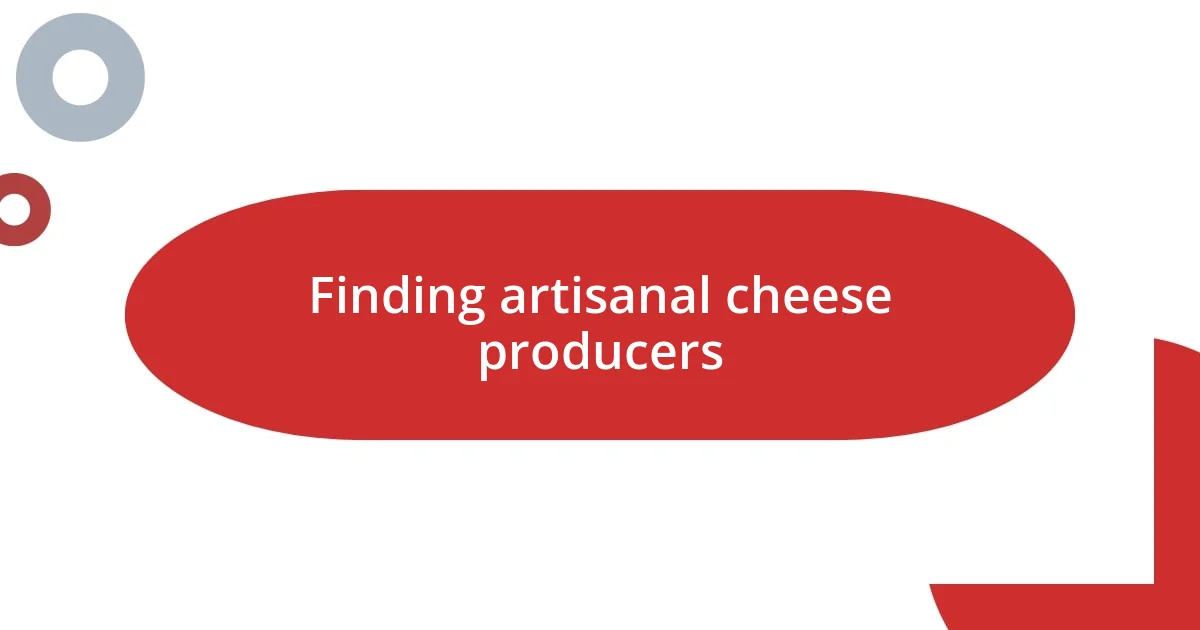
Finding artisanal cheese producers
Finding artisanal cheese producers can often feel like a treasure hunt. I remember the thrill of stumbling upon a small, family-run cheese shop tucked away in the hills of Vermont. The owner, a passionate cheese maker, invited me to taste his creamy, herb-infused goat cheese, sharing stories about his sustainable farming practices while my taste buds danced with delight. It made me realize how local and personalized cheese production can profoundly impact flavor.
Social media and food festivals are also incredible resources for discovering artisanal cheese producers. I can’t count how many times Instagram has led me to hidden gems. One evening, I was scrolling through my feed when I came across a post showcasing a cheese maker from France who specialized in raw milk cheeses. That prompted me to research further and, eventually, to travel to her farm. The experience of meeting her and tasting her unique creations added a whole new layer to my appreciation for cheese.
Additionally, don’t overlook farmer’s markets; they often showcase the best local artisans. I vividly recall visiting a market one sunny Saturday, where the aroma of freshly made cheese wafted through the air. I decided to chat with a vendor who was crafting a tangy Feta. As we talked, he shared his philosophy on ethical production and how each batch is a labor of love. It struck me how every artisanal producer carries a piece of their identity in the cheese they create. Have you ever felt such a connection to the food you eat? Those moments remind me that behind every flavor, there’s a passionate story waiting to be uncovered.
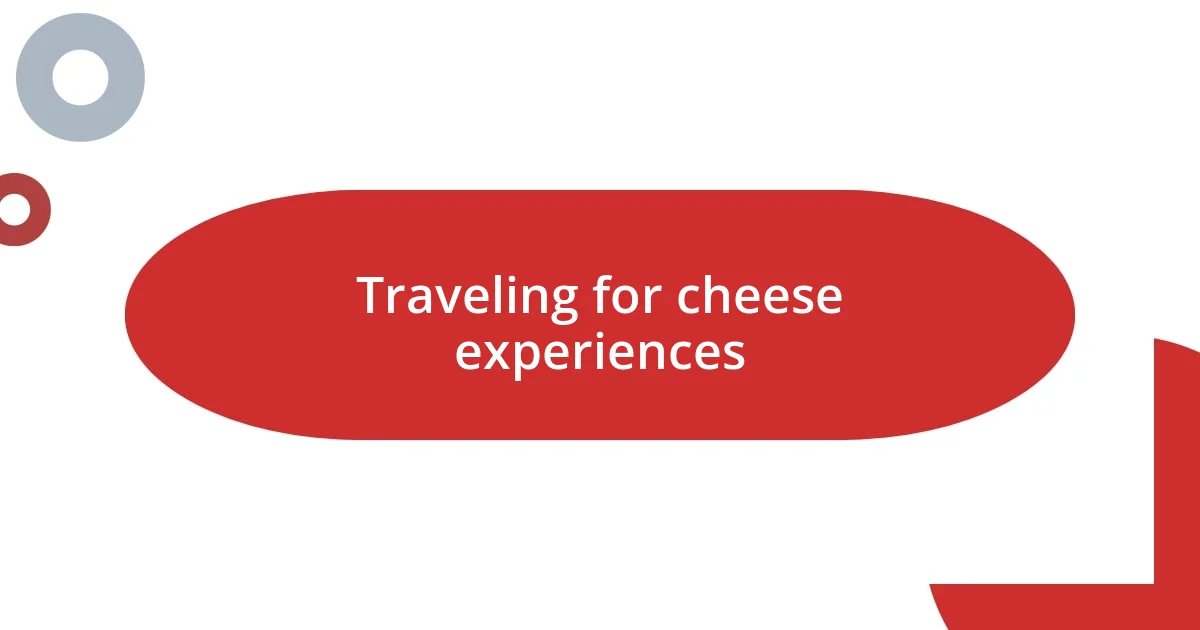
Traveling for cheese experiences
Traveling for cheese experiences can be one of the most delightful journeys. I fondly recall my trip to the cheese markets in the Netherlands, where I was surrounded by wheels of Gouda in every imaginable flavor. The vibrant atmosphere buzzed with chatter, and tasting samples from various vendors felt like a unique adventure. Have you ever stood in a place where the cheese literally surrounds you? The excitement is palpable, and each bite tells a story of its origin.
One of my most memorable cheese experiences occurred while visiting a small village in France. I had the chance to participate in a local cheese-making workshop. With my hands immersed in curds and whey, I felt a deep appreciation for the craft. As the instructor shared the history behind each type of cheese we were making, I realized that learning about cheese wasn’t just about flavor; it was about connection. It made me wonder: how often do we get to truly engage with our food? This experience highlighted that cheese-making is not just a science but an art filled with tradition.
I also find that traveling for cheese often leads to unforgettable friendships. During a cheese tour in Italy, I met a fellow cheese enthusiast who shared my passion. We bonded over our love for Parmigiano-Reggiano, savoring every facet of its flavor profile. As we chatted about our favorite cheese experiences, I felt a sense of camaraderie that transcended language and culture. Has a shared love for food ever connected you with someone new? Those moments are what make cheese travel not just about tasting but about forging relationships and creating lasting memories.








